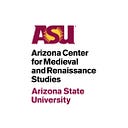Enclosed Choices
by Elizabeth A. Lehfeldt
Lauren Groff’s novel, Matrix, (a fiction finalist for the 2021 National Book Awards) is the story of a strong-willed and successful abbess (the woman who led a convent). Counter to popular assumptions about women in this period being deprived of choice, Groff centers female ambition and imagines a medieval woman making bold decisions that serve her desire to lead her community. Marie, the novel’s protagonist (loosely based on the medieval poet Marie de France, fl. 1160–1215), wants to rescue her abbey from poverty and obscurity and build it into something great and powerful, all the while advancing herself. Groff could have chosen another, more obvious character who figures in her novel — the famous queen Eleanor of Aquitaine (c. 1122–1204) — as the vehicle for this story line. Instead, she turns to this reluctant abbess of an impoverished convent.
The medieval convent is a surprisingly evocative laboratory for this exploration. Our stereotypes of these institutions cast nuns as passive and disconnected actors. Founded on the monastic ideals of withdrawal and contemplation, the medieval convent might seem an odd place to stage a story of ambition. Yet convents were unique in medieval society as communities composed entirely of women and responsible for the care and sustenance of one another. And this could mean that there were choices available to abbesses and nuns that held the potential for empowerment.
Medieval abbesses had to be creative and bold administrators. The ability of their communities to pursue lives of prayerful devotion depended upon the material and financial security of their convents. So abbesses oversaw complex estates, initiated lawsuits, appeared before bishops, negotiated with tenants, and inspected the boundaries of their land. Abbesses needed to be literate and able to keep accounts.
We know from an analysis of account books and attendant records that many abbesses were shrewd managers who made careful financial decisions calculated to yield maximum economic security for their communities. Valerie Spear’s translation of the eulogy for Euphemia, a thirteenth-century abbess of the English convent of Wherwell, reveals that she was recognized for her piety but also celebrated for her exceptional leadership. The eulogist noted her administrative talents that included having decrepit buildings torn down and replaced with new ones and overseeing the construction of a new mill.
We also know, however, that a significant constraint on abbesses’ power was the influence of male outsiders — both religious and secular. Convents answered to the oversight of bishops and male religious officials who routinely visited convents. These visitors scrutinized the observance of the Divine Office and common life, the material conditions of physical buildings, and financial management.
Abbesses also regularly contended with secular men who challenged their decisions and authority. Local lords and tenants might dispute payments or the boundary lines separating estates. In one particularly dramatic instance (described in Penelope Johnson’s work) in the mid-twelfth century an abbess elected to join the convent’s steward out in the fields personally to see to the enforcement of a boundary line. A dispute erupted and the abbess was knocked to the ground by the steward of the local lord. Being an abbess was challenging, and potentially a bit dangerous. But it was also a way to wield power and influence and find a home for female ambition.
In Groff’s telling, Marie constantly wards off the threats (including sexual advances), intrusions, and suspicions of male clergy and the townspeople. She decides that the way to truly fulfill her ambitions of being a strong leader and protecting her nuns is to wall the community off by constructing an elaborate labyrinth around it. There “her daughters would be removed, enclosed, safe. They would be self-sufficient, entire unto themselves. An island of women.”
In this, Marie inverts a gender-specific bodily discipline that was more typically imposed by men to control women. Instead, she fashions it into a tool to protect from male interference. Monasticism in its many forms was founded on the principle of separation from the world. Yet by the twelfth century enclosure had become a distinctly gendered discipline. When asked whether monks and nuns governed by the Benedictine Rule ought to be bound by the same standards of enclosure, the Cistercian monk Idung of Prüfening responded: “[B]ecause the feminine sex is weak, it needs greater protection and stricter enclosure.” This gendered interpretation was enshrined in the papal directive Periculoso in 1298, which stated baldly that it was imposing enclosure on female communities in order to restrain nuns who had rejected virtue by “casting off the reins of respectability and impudently abandoning nunnish modesty.”
Thus, at first blush the abbey’s decision to wall themselves off might seem a sad statement on women’s need for self-imprisonment, freighted with the internalized misogyny and repression of the medieval church. But is it? Marie’s “island of women” should shift our understanding of what this discipline meant in practice for nuns. It could be an empowering choice, and not a limiting stricture.
Marie’s decision to radically enclose her nuns in Matrix is played to dramatic effect by Groff (cut off from all outside contact, including the sacraments, Marie will eventually claim the authority to say Mass and hear confessions). Nonetheless, it was a decision within the grasp of actual medieval convents. Reviews of the book suggest that Groff is crafting a “female utopia”— but if she is, it’s a utopia that may actually have sometimes existed.
Medieval convents could turn enclosure to their advantage; it was freeing; it limited the advances and meddling of male outsiders. When Juana de la Cruz (1481–1534) became the abbess of the convent of Cubas in Spain, she directed her nuns to observe enclosure. According to her biographer, this was a deliberate decision that came on the heels of her “good governance” (buen gobierno) and efforts to shore up the convent’s finances. Liberated from outside intrusions and the need to beg for alms to provide sustenance, the nuns were able to devote themselves to their spiritual responsibilities. In this, they fashioned their own version of a hortus conclusus — a walled garden that drew its inspiration from this passage in the Song of Songs: “A garden enclosed is my sister, my spouse; a garden enclosed, a fountain sealed up.”
Medieval theologians upheld this image as a way of talking about Mary’s perpetual virginity. Artistic depictions showed Mary contained by or within the walled garden, closed off and protected from sin. But as the nuns of Cubas reveal, such self-containment also provided an opportunity to flourish spiritually, free from the oversight and scrutiny of male outsiders. Centuries later Teresa of Avila would argue similarly for the enclosure of the nuns of her newly founded Carmelite convents on the grounds that they needed to separate themselves from the influence of their families and the meddling of patrons.
The decision to enclose and pursue various ambitions, however, was not simply dependent upon the vision, ambition, and skills of a strong abbess. Convents were self-sufficient and survived financially because of the labor of numerous convent officers. These could include a cellaress (overseeing provisions), treasurer, sacrist (caring for objects and materials in the church), and infirmarer (providing care to sick and dying nuns).
The enclosed convent thus also contains echoes of Christine de Pisan’s fifteenth-century prose work, The Book of the City of Ladies. In de Pisan’s telling, she has a vision of three Ladies (Reason, Rectitude, and Justice) who inspire her to create a metaphorical City of Ladies as a remedy against medieval misogyny. The city is a community of historical, biblical, and mythological women, celebrated for their strength, skills, and virtue. The three Ladies also instruct her to build an imposing structure and “to raise the wide walls around, high and thick, with huge towers and strong bastions with moats around, fortified by block houses, as is fitting for a city with a strong and lasting defense.” Christine creates an enclosed city where women — previously maligned by men — can flourish. So, too, the enclosed medieval convent could be a community where women’s ambitions and talents could thrive, freed from male interference and judgement.
In short, enclosure was not necessarily confining for the nuns who chose it. But was it sustainable? Groff is able to create a world where men are entirely absent (and silent — there is not a single male character with a speaking part). But medieval convents remained dependent upon the sacramental services of priests and could not completely remove themselves from men’s oversight and intrusions. The power and the potential for fulfilling ambitious visions lies less in whether or not absolute enclosure could work, but instead in the ability to choose it. Ambition could blossom in this hortus conclusus and the city of ladies could be well-populated by talented nuns. Enclosure is not the absolute or necessary path to empowerment, but choice is. And here the medieval collides with the modern and chronological distinctions dissolve. Because choice is always at the heart of a woman’s ability to chart her course and pursue her ambition.
Elizabeth A. Lehfeldt is Professor of History at Cleveland State University. She is the author of Religious Women in Golden Age Spain (Ashgate, 2005) and the recent essay, “Why Nuns Aren’t Funny” (Sixteenth Century Journal, 2019). She is currently working on a study of the convent household in late medieval and early modern Europe. She also writes and consults about higher education, pedagogy, and faculty development and some of that work has appeared in Inside Higher Ed and Times Higher Education. You can find her online at www.elizabethalehfeldt.com and on Twitter @school_tales.

